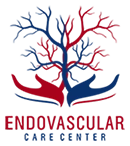Struggling with persistent leg pain or swelling after a long day? Though it seems a minor concern, it could indicate something serious. It might be due to Deep Vein Thrombosis (DVT), a blood clot forming in your leg without obvious warning signs. This can lead to life-threatening complications such as pulmonary embolism.
Many individuals confuse the initial symptoms of blood clots in leg with muscle fatigue or strain. This may worsen the symptoms and move to the next stage. Early detection of these warning signs can literally save your life and avoid dangerous consequences. This blog explains symptoms to watch for, why timely detection is important, and when to go to the doctor immediately.
What are Blood Clots?
A blood clot is an accumulation of blood that has thickened within a blood vessel. The vessels of blood function like highways, transporting blood between your heart and the rest of your body. These are
- Arteries: Transport blood away from the heart
- Veins: Return blood to the heart
- Capillaries: Link arteries and veins
Blood clots can occur anywhere but most frequently occur within the veins. Types include:
- Deep Vein Thrombosis (DVT): Occurs in deep veins. It is most often found in the legs. The clot remains locked and prevents blood from flowing through.
- Pulmonary Embolism (PE): Occurs when a clot breaks and passes through the bloodstream, which may block pulmonary arteries.
Arterial clots are rare however it can be fatal because they restrict blood flow in arteries.
Early Signs of Blood Clots:
Blood clots are nothing but a natural way of the body responding to injuries that happen. However, they can become dangerous and potentially fatal when they form inappropriately inside blood vessels. This is possible in the case of DVT where a clot forms in deep veins, mostly in the lower leg, or you get a clot behind the knee. If not treated in the early stages, it can migrate to critical organs, such as the lungs.
Symptoms of Deep Vein Thrombosis (DVT):
A DVT tends to arise in the legs but also can form in the arms. A clot forms in deep veins and, if untreated, can cause life-threatening complications. Hence, it is advisable to compare varicose veins vs DVT symptoms to find out the actual condition and start the right treatment before it’s too late.
1. Swelling
Abnormal swelling of one leg or arm is a frequent indication of a blood clot. It comes on and increases over the course of the day, as opposed to normal swelling in the evening. Calf pain and blood clots can also develop, indicating that immediate medical care is necessary.
2. Leg Pain
New, persistent pain, especially in the calf, may resemble cramping. The pain will not subside with rest. This, combined with leg swelling and blood clots, can point to a problem. The pain that comes and goes often can be caused by a clot. So, diagnosing early is essential to prevent further complications.
3. Varicose Vein Changes
If you have varicose veins, look for symptoms like bulging that does not decrease when in a resting position, sudden firmness of the vein, or redness and softness of the skin over the area. These can be signs that a clot is developing inside or around the vein.
4. Skin Discolouration or Warmth
This kind of blood block in leg surrounding the clot may be warm or red and discolored. Usually, this discoloration is found on painful or swollen areas and might feel tender while touching. If you spot these symptoms early and opt for advanced DVT treatment in Mumbai, you can stay away from serious complications.
Signs of a Blood Clot in the Arm:
Arm clots have the same symptoms as leg clots. Swelling and color changes might be more apparent because of thinner skin and less fat content. For instance, an affected forearm or hand may appear purple or bluish in colour due to improper blood circulation.
Signs of a Pulmonary Embolism:
When a blood clot moves to the lungs, pulmonary embolism occurs. It can be a medical emergency. The symptoms can vary based on the size of the clot and the person’s general health. Look out for the following:
1. Shortness of Breath
Unexplained or sudden breathlessness that does not decrease with time may indicate a lung clot (PE). It becomes more prominent with light exercise and lasts for hours or even days.
2. Chest Pain
The pain may feel stabbing in the chest and get worse with deep breaths. Patients describe it as pressure or heaviness that can’t be easily bearable. It can move from the front to the back of the chest. These might be early symptoms of blood clot in leg that has moved to the lungs and needs immediate medical attention.
3. Coughing Up Blood
Coughing up blood in visible quantities is a serious warning sign. This can occur along with chest pain and shortness of breath.
Final Thoughts:
Blood clots in leg may cause serious consequences. But early diagnosis of symptoms avoids life-threatening outcomes. Be careful about leg swelling with DVT or skin color changes in the legs and arms. If any of these symptoms are noticed, seek medical care immediately in order to escape the consequences of DVT or pulmonary embolism.
For advanced care, meet Dr. Kunal Arora, a top Vascular and Interventional Radiologist in Mumbai, practicing at the Endovascular Care Centre. With years of experience in minimally invasive varicose vein treatment, DVT, and other vascular diseases, he ensures effective outcomes. So, don’t take a chance on your health anymore. Book your appointment today!


